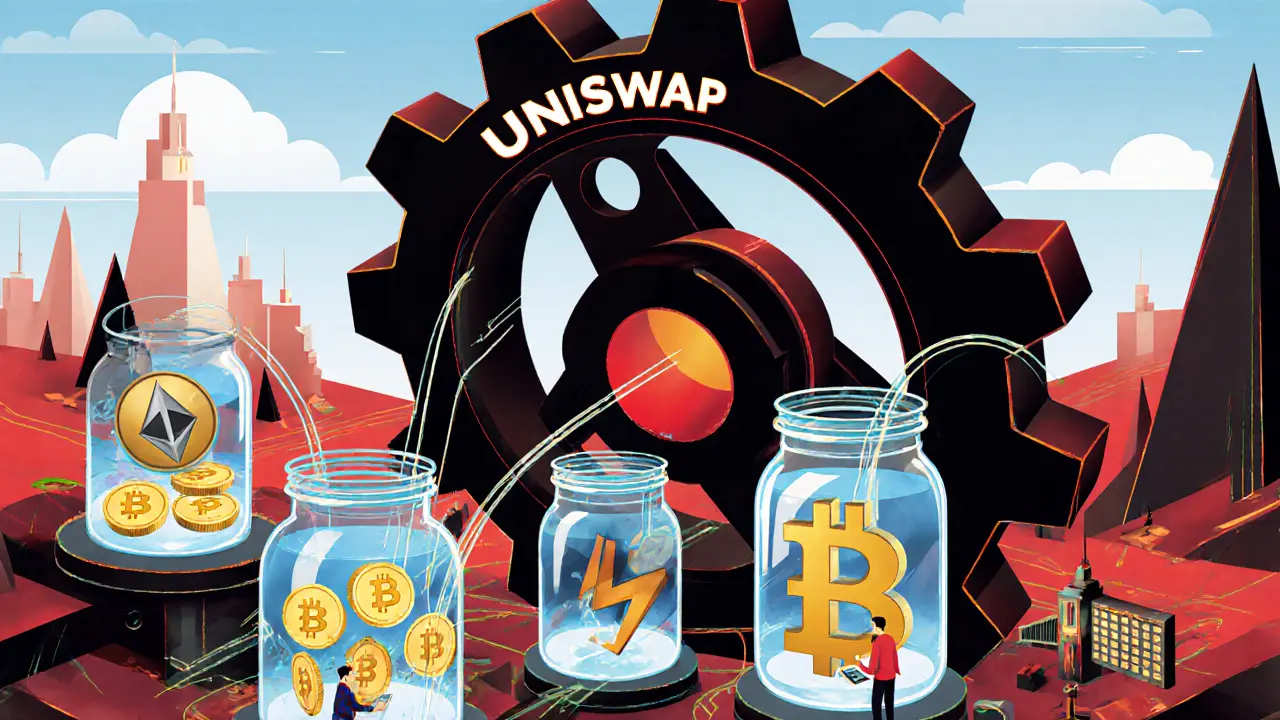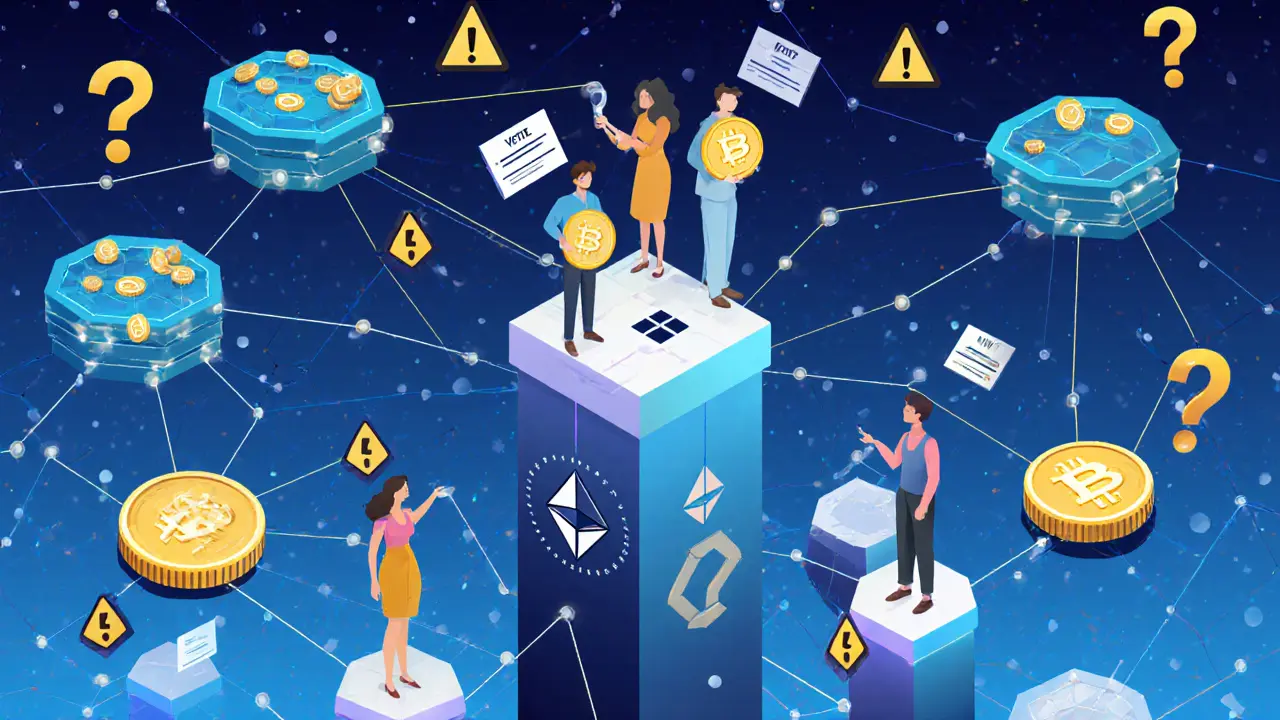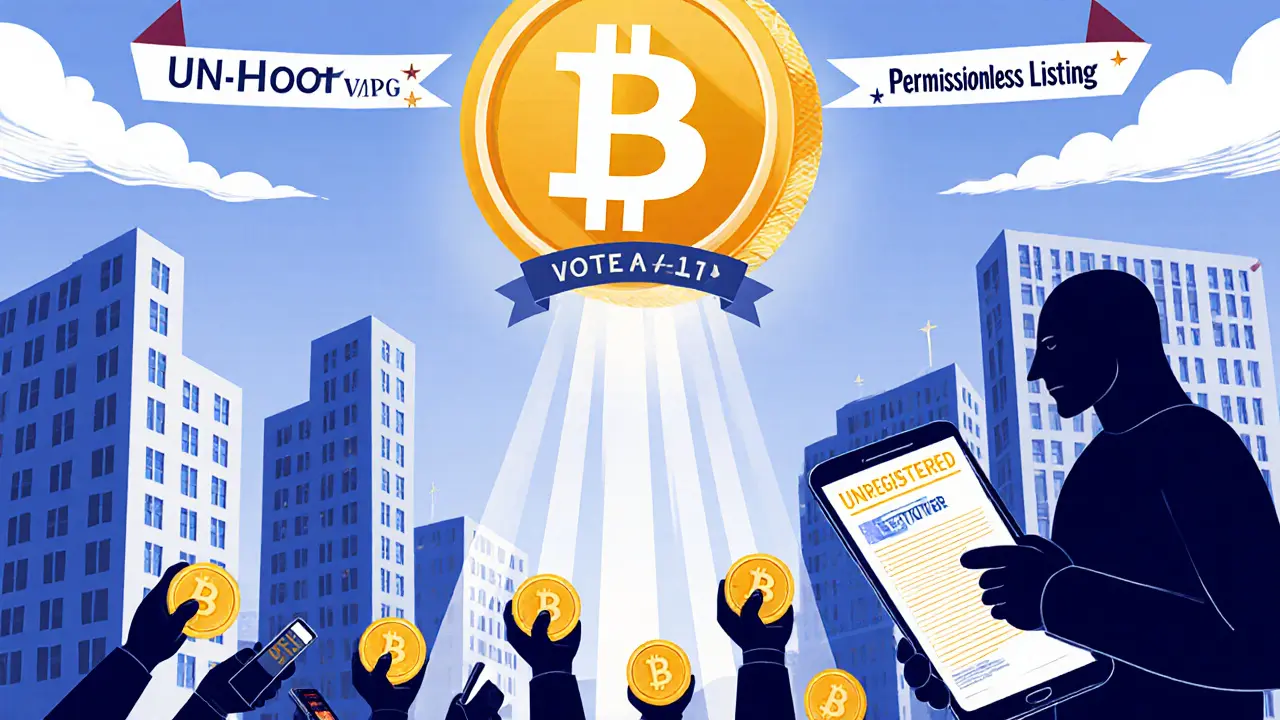What is Uniswap (UNI) Crypto Coin? A Simple Guide to the Largest Decentralized Exchange
 Oct, 31 2025
Oct, 31 2025
Impermanent Loss Calculator
How Impermanent Loss Works
Impermanent loss happens when the price of your liquidity pool tokens changes. When you provide liquidity to Uniswap, you're adding equal value of two tokens to a pool. If the price ratio between those tokens changes, your position's value may be less than simply holding the tokens.
Example: If you provide liquidity with 1 ETH and 1000 USDC at $1,000/ETH, your position is worth $2,000. If ETH price rises to $1,500, your liquidity position is worth less than $2,000 due to the price change.
Enter values to see calculation results
Uniswap isn’t a coin you buy to hold like Bitcoin. It’s a decentralized exchange-a platform that lets you swap one cryptocurrency for another without a middleman. The UNI token is just the voting key that lets people help run it. If you’ve ever traded ETH for DAI or bought a new token right after it launched, you’ve probably used Uniswap without even realizing it.
How Uniswap Works (No Middleman Needed)
Traditional exchanges like Coinbase or Binance act as middlemen. You send your crypto to them, they match buyers and sellers, and they take a fee. Uniswap does something totally different. It uses smart contracts on Ethereum to let people trade directly with each other.
Here’s how it actually works: Instead of order books, Uniswap uses something called liquidity pools. Imagine a jar filled with 100 ETH and 200,000 USDC. Anyone can add to this jar, and anyone can take from it. When someone swaps ETH for USDC, the price automatically adjusts based on how much is left in the jar. The math behind it is simple: the product of the two tokens in the pool always stays the same (x * y = k). So if half the ETH gets taken out, the price of ETH goes up.
This system is called an Automated Market Maker (AMM). It’s what makes Uniswap possible without anyone managing trades. No customer support. No identity checks. Just code.
What Is the UNI Token?
UNI is the governance token of Uniswap. It doesn’t pay dividends or earn interest. Instead, it gives you a vote on changes to the protocol. Want to change the fee structure? Add a new token listing rule? Propose a new feature? You need UNI to vote on it.
When Uniswap launched UNI in September 2020, it didn’t sell it. It gave away 60%-600 million tokens-to people who had already used the platform. That’s right: if you’d swapped tokens on Uniswap before that date, you got free UNI. The rest went to the team, investors, and advisors, with vesting periods to prevent dumps.
As of 2025, there are exactly 1 billion UNI tokens in existence. No more will ever be created. That’s fixed. It’s not inflationary like some other tokens.
Why Uniswap Dominates the Decentralized Exchange Market
There are dozens of decentralized exchanges now-PancakeSwap, SushiSwap, Curve, Balancer. But Uniswap still handles more than 60% of all DEX trading volume. Why?
- Deep liquidity: Over $5 billion is locked in Uniswap’s pools. That means you can trade large amounts without prices moving too much.
- Permissionless listing: Anyone can create a trading pair. New tokens launch on Uniswap before anywhere else. Over 98% of its 250,000+ pools were made by regular users, not the team.
- Multi-chain support: While built on Ethereum, Uniswap now works on Arbitrum, Optimism, Base, and Polygon. You can swap tokens on cheaper, faster networks without leaving the ecosystem.
- Security: It’s been audited by top blockchain security firms like Trail of Bits and OpenZeppelin. No major exploits since V2 launched in 2020.
Compare that to centralized exchanges, which can freeze your funds, delist tokens without warning, or shut down entirely. Uniswap can’t be shut down by a government or a CEO. It runs as long as Ethereum runs.

The Downside: It’s Not Perfect
Uniswap isn’t magic. It has real problems.
- High gas fees: On Ethereum, each trade costs $1 to $5 during busy times. That’s expensive for small trades.
- Impermanent loss: If you provide liquidity and the price of one token swings hard, you can lose money compared to just holding. One user reported earning $217 in fees but losing $312 when ETH dropped 20%.
- No limit orders: You can’t set a price to buy or sell later. You get the current market price, which can be bad if the market moves fast.
- Complex for beginners: Setting up MetaMask, understanding slippage, estimating gas-new users often fail their first few attempts. One study found 63% needed 2-3 tries just to provide liquidity.
That’s why most beginners start with interfaces like Zapper or Matcha. They hide the complexity and let you click through swaps like you’re on a regular app.
Uniswap V4: The Latest Upgrade
In May 2024, Uniswap launched version 4. This wasn’t just a tweak-it was a major shift.
V4 introduced something called “hooks.” Think of them as plugins for liquidity pools. Developers can now build custom logic into pools-for example, auto-compounding fees, dynamic fees based on volatility, or even integrating with other protocols. This opens the door for entirely new DeFi products built on top of Uniswap.
It also cut gas costs by 15-25% and simplified the code structure. Before V4, each trading pair needed its own smart contract. Now, all pairs use one shared contract. That’s like upgrading from 100 separate websites to one app with 100 tabs.

Who Uses Uniswap?
It’s not just crypto hobbyists. Institutional players use it too.
According to Arkham Intelligence, 12 of the top 20 crypto hedge funds actively provide liquidity on Uniswap. They’re not just trading-they’re earning fees by locking up their capital. Meanwhile, retail users make up 63% of daily trades, but institutions control 78% of the total volume.
That’s a key point: Uniswap isn’t just for small traders. It’s the backbone of professional DeFi.
Regulatory Pressure Is Growing
In September 2023, the U.S. Securities and Exchange Commission (SEC) sent Uniswap Labs a Wells notice-meaning they’re considering suing them for selling an unregistered security (UNI). The price of UNI dropped 22% overnight.
But something unexpected happened: governance participation jumped 317%. People realized if UNI gets classified as a security, the whole protocol could be at risk. So more holders voted to protect it.
Uniswap is now working on compliance features for Europe’s MiCA regulations, which take full effect in 2024. Whether it can adapt without losing its decentralized nature remains to be seen.
Is Uniswap Right for You?
If you want to:
- Trade new tokens the moment they launch
- Swap crypto without trusting a company
- Earn fees by providing liquidity (and understand the risks)
- Be part of a community-run protocol
Then Uniswap is essential.
If you want:
- Limit orders or stop-losses
- Low fees on small trades
- A simple app with customer service
- To avoid learning about gas and slippage
Then stick with a centralized exchange like Coinbase or Kraken.
Uniswap isn’t for everyone. But for those who want true financial freedom in crypto, it’s the most powerful tool available.
Is UNI a good investment?
UNI isn’t designed as an investment. It’s a governance token. Its value comes from its role in running Uniswap, not from price appreciation. While it has gone up and down like other crypto assets, betting on UNI for returns is risky. Its price depends on how much the protocol grows, not on any profit-sharing model. Most long-term holders use it to vote, not to speculate.
Can I lose money using Uniswap?
Yes, in two main ways. First, if you provide liquidity and the price of one token drops sharply compared to the other, you can suffer impermanent loss-meaning you end up with less value than if you’d just held the tokens. Second, if you set slippage too low, your trade might fail and you’ll still pay the gas fee. Third, if you send crypto to the wrong address or use a scam interface, you can lose funds permanently. Always double-check contracts and use trusted interfaces.
How do I start using Uniswap?
First, get a wallet like MetaMask and fund it with Ethereum (ETH). Then go to app.uniswap.org (not a fake site-check the URL). Connect your wallet, pick the tokens you want to swap, set your slippage tolerance (usually 0.5%-1% for stablecoins, 3%-5% for volatile ones), and confirm the transaction. For your first time, expect to spend 30-60 minutes learning. Use Zapper or Matcha if you want a simpler interface.
What’s the difference between Uniswap V2, V3, and V4?
V2 (2020) introduced ERC-20/ERC-20 trading and flash swaps. V3 (2021) added concentrated liquidity-allowing providers to earn more fees by locking funds in specific price ranges. V4 (2024) added hooks for custom pool logic and a singleton architecture that reduces gas costs. Most users still interact with V3 or V4 through interfaces, so they don’t need to choose manually.
Why do gas fees on Uniswap vary so much?
Uniswap runs on Ethereum, and Ethereum’s fees depend on network demand. When people are buying NFTs, minting tokens, or trading heavily, the network gets congested and gas prices spike. You can avoid high fees by waiting for quieter times (usually late at night UTC), using Layer 2 networks like Arbitrum or Base, or using a gas estimator tool in your wallet.
Eli PINEDA
November 1, 2025 AT 15:40Debby Ananda
November 2, 2025 AT 12:35Nadiya Edwards
November 2, 2025 AT 20:40Ron Cassel
November 4, 2025 AT 08:14Malinda Black
November 5, 2025 AT 14:54ISAH Isah
November 5, 2025 AT 15:36Jeremy Jaramillo
November 6, 2025 AT 07:25Sammy Krigs
November 7, 2025 AT 16:41naveen kumar
November 9, 2025 AT 03:28Bruce Bynum
November 10, 2025 AT 05:36Wesley Grimm
November 10, 2025 AT 11:21